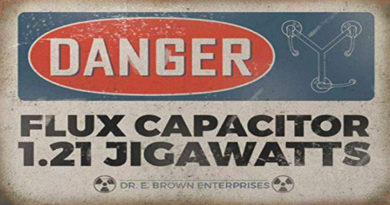When Life Hands You Lemons, You Make… Pastrami?
By Jeff Finkelstein
Growing up Jewish in Philadelphia we had constant arguments around which deli was the best? For me it was and remains the “Famous 4th Street Deli.” They have always made and still make their own breads, corned beef, and most importantly pastrami. The memories of taking a long walk to “Famous’s” and getting a regular pastrami on rye with deli mustard (which easily fed two to three people) or a “zaftig” (which fed four to five people), then taking a leisurely walk home remains a cherished memory.
 When we visited our relatives in Manhattan, Brooklyn, or the Bronx, we had some good-natured arguments around which was best. I do agree now that Katz’s was one of the best, but I had too much Philly pride to admit it to them. Like the Flyers vs the Rangers, Phillies vs the Mets, Eagles vs the Jets, or our beloved 76ers vs the Knicks, we would not admit even a grudging respect for how good each other’s delis tasted. To kids growing up in the ’50s and ’60s, those trips to the deli were like visiting a piece of heaven.
When we visited our relatives in Manhattan, Brooklyn, or the Bronx, we had some good-natured arguments around which was best. I do agree now that Katz’s was one of the best, but I had too much Philly pride to admit it to them. Like the Flyers vs the Rangers, Phillies vs the Mets, Eagles vs the Jets, or our beloved 76ers vs the Knicks, we would not admit even a grudging respect for how good each other’s delis tasted. To kids growing up in the ’50s and ’60s, those trips to the deli were like visiting a piece of heaven.
If only we had something like that in Atlanta…
So why the trip down memory lane? Stay with me for a bit…
You start by making corned beef from a cut of brisket. Some may be surprised that it does not require the most expensive brisket, but you don’t want something too fatty, just about 1/8” of fat on it. You can mix your corned beef spices (I’ll share mine for a good price) with heavily salted water, about one gallon of water to four pounds of meat, then brine the brisket for a week.
To turn the corned beef into pastrami you first put it in a pot of plain water for eight hours to desalinate it. Then take it out, rub it with spices, wrap it in plastic wrap, and put in the fridge for two to three days. From there you take it out and put it on a smoker set to 225 degrees for 12 to 24 hours until it reaches temp (around 200 degrees). You will have a nice bark on the outside at this point. You then can wrap it once cooled, and refrigerate until ready to eat.
Before you eat it, real Jewish delis steam the meat to maximize its tenderness. If you did it right, you will have a little bit of heaven on rye bread. If you did it wrong, you will still have a pretty darn good piece of brisket worthy on its own.
Now that everyone is drooling a bit, let me tie it back to our business using some of my rules of technology…
Rule #36: There is little as permanent as a temporary solution
The real secret to making a good pastrami is patience and trust in the process. Which technically is not a secret but is the hardest part. Very few things that are worthwhile and that last are easy. If you rush the process, you end up with something that is not what you really wanted but is good enough for the short term. The problem is that it ends up being a long-lived solution that is hard to get away from as it ends up being deployed and supporting customers. No one likes to interrupt customers’ enjoyment of the services we provide.
Which brings up another one of my rules…
Rule #6: The equipment we deploy today becomes the legacy problem of tomorrow
How many times have we deployed something as a short-term fix only to have it shackle us for years? We deploy gear to fix a short-term problem, then end up requiring future standards to support it, which reduces the capabilities of the new technologies.
With that as a hunger inducing setup, here are my annual technology predictions for this year. Even though you will not be reading this until the spring of 2021, keep in mind I am writing this in the December holiday break. A bit of prognostication fueled by naps, bourbon, and Murdoch Murder Mysteries.
2021 Predictions

Bandwidth Usage
Since the start of the pandemic many cable operators have seen a downstream increase of 25% or greater and an upstream increase of 50% or greater. This amounts to approximately an 18 to 24-month uptick that happened in the period of a few months resulting from the work-from-home/school-from-home realities. The NCTA and CableLabs have done a great job collating information from many operators and update the results weekly on their COVID webpage (https://www.ncta.com/COVIDdashboard).
As the past increase is a fact, the question is what does the future hold? Rule #9 states: We have no control over how customers use their bandwidth. This means not just what they use it for, but also how much they use.
I believe that as a result of the WFH/SFH scenario our customers are used to a new way of life. I can see consumption dropping a bit, but do not see it going back to where it was pre-COVID. We need to plan for the future network needs based on where we are +/- a few percentage points. This means accelerating capex and opex by 12+ months to make sure we have enough capacity to handle future spikes. One thing we are very fortunate in is that DOCSIS is a very elastic network and can handle transient utilization spikes very well. We still need to plan for the future growth based on a new normal.
Distributed Access Architecture
There has been much discussion the past few years about the need for DAA, but then concern about the lag of it becoming mainstream. I believe 2021 is that year. Remote PHY and remote MACPHY devices will begin picking up speed in their deployments and by mid next year will be the majority of new devices being deployed. The gains in replacing analog optics with digital and the resultant increase in SNR and modulation make it a winner.
DOCSIS 4.0®
DOCSIS 4.0 will take time to develop the silicon and products needed for mass deployment, and the requisite changes to the outside plant will take a while as well. As I have written in the past, we need to spend every dollar once, unless we choose to spend it twice. With the increased utilization we need a multi-faceted strategy to reduce wasted capital. Before DOCSIS 4.0 we typically did the following:
- Add DOCSIS channels
- Soft node splits (segmentation)
- Hard node splits
With the creation of DOCSIS 4.0 it becomes a bit more complex, but as a result the runway is also extended by many years:
- Soft node splits
- Hard node splits
- Mid-split
- High-split
- 1.8 GHz addition or full duplex DOCSIS
- Ultra-high-split for extended spectrum DOCSIS
We all have a D4.0 choice to make regarding ESD or FDX, and the answer will depend on where we are today, how we manage our HFC plant, and our product plans. One thing is certain as rule #3 states: You can never have too much spectrum, whether done by extending the frequency bands for upstream and downstream or use FDX to overlay the bands.
Low-Latency Services
There are many services that benefit from lowering the latency of packets through the home and access network. CableLabs has done a great job on the specs, but now we need the products. It is not just latency we need to reduce; we also need bounded jitter performance to enable the future services that are dependent on it. Gaming is one popular use case, but we also need to consider others including home healthcare, home security, video conferencing, virtual and augmented reality, home automation, and more. While reducing latency and stabilizing jitter is an important first step, we also need to realize that it is one mile of a 2,000-mile problem. The work being done at IETF to introduce low latency into the traversal of packets across the Internet is an equally important workstream.
Virtualization
I visualize two distinct use cases for virtualization in the DOCSIS network. The first is the typical one we think of where the data, control, and management planes are all run as a virtual entity in a cloud. The cloud can be a local one within the service provider network, but it may also be part of a larger cloud infrastructure e.g., AWS or Google. This is directly applicable to the R-PHY use case where the data plane that deals with the DOCSIS MAC layer is in the cloud along with the management plane (SNMP, NETCONF/YANG, etc.) and control plane (Openflow, BGP, IS-IS, MPLS, GRE, etc.).
The second use case is more nuanced and is used for flexible MAC architecture/remote MACPHY models. In this case the MAC is colocated with the PHY in the node, but it is also possible to have the lower MAC with the PHY and upper MAC in the cloud, though that is still being discussed in the working groups. This scenario reduces the amount of data that has to traverse through the cloud as the data path goes directly to a router for IP services and the interconnection from the RMD (remote MAC device) and the router can be any Layer 2 (like L2vpn) or Layer 2.5 protocols (MPLS for example).
Both virtualization models have their own strengths and weaknesses, and it is reliant on the operators to choose the model that works best for their individual deployment scenarios.
As I am out of column space, I will leave it there. Look for more columns digging into each of these in 2021. Until then, please stay safe and stay sane!
 Jeff Finkelstein
Jeff Finkelstein
Executive Director of Advanced Technology
Cox Communications
Jeff.Finkelstein@cox.com
Jeff Finkelstein is the Executive Director of Advanced Technology at Cox Communications in Atlanta, Georgia. He has been a key contributor to the engineering organization at Cox since 2002, and led the team responsible for the deployment of DOCSIS® technologies, from DOCSIS 1.0 to DOCSIS 3.0. He was the initial innovator of advanced technologies including Proactive Network Maintenance, Active Queue Management and DOCSIS 3.1. His current responsibilities include defining the future cable network vision and teaching innovation at Cox. Jeff has over 43 patents issued or pending. His hobbies include Irish Traditional Music and stand-up comedy.
Shutterstock




